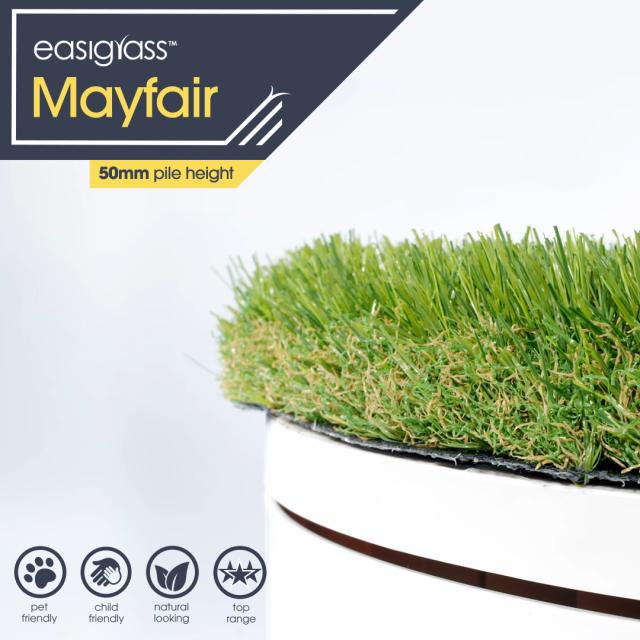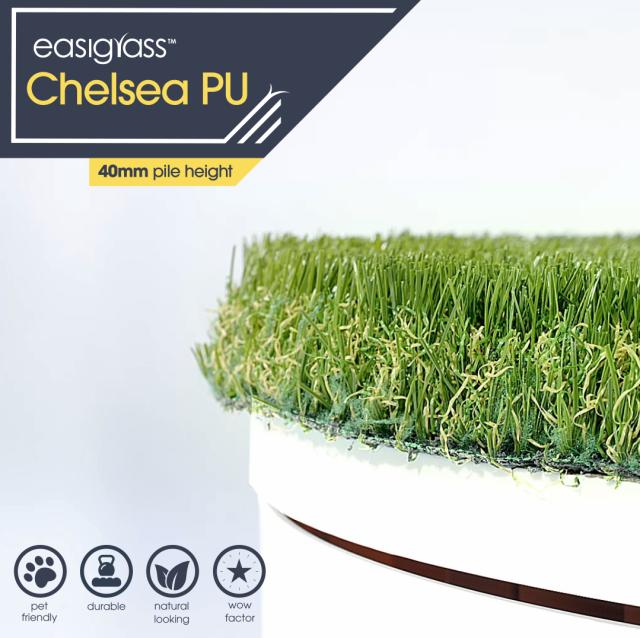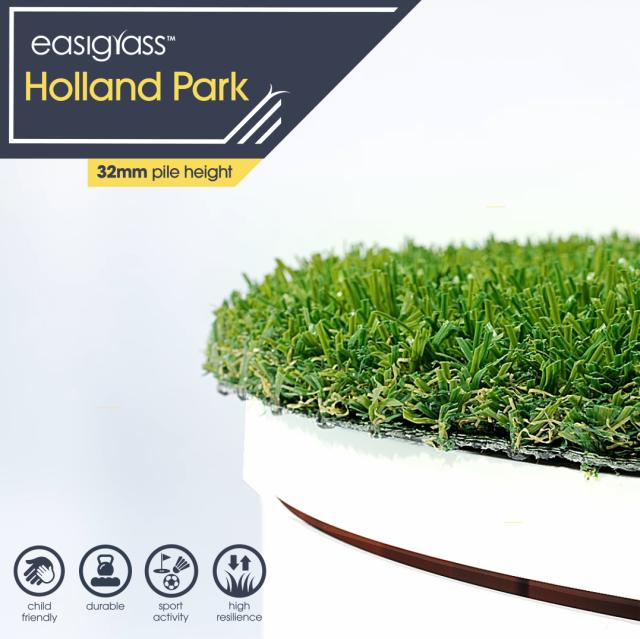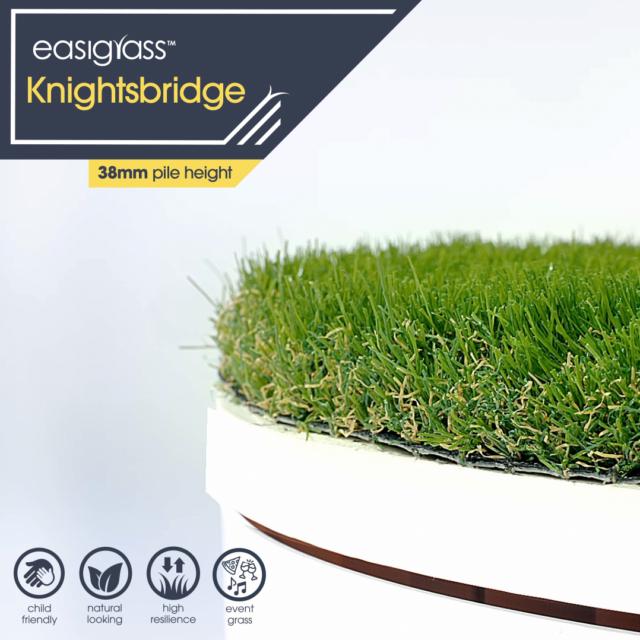How Does Pile Height and Density Affect Artificial Grass?
-
Pile height refers to the length of the grass blades, with short piles offering durability and low maintenance, medium piles balancing comfort and resilience, and long piles providing a soft, luxurious look ideal for low-use or decorative spaces.
-
Shorter piles are ideal for pets or sports, medium piles suit busy family gardens, and longer piles are best for achieving a realistic appearance in less frequently used areas.
-
Pile density measures how tightly the blades are stitched, with higher density resulting in a thicker, more resilient and lush-looking lawn that better withstands foot traffic.
-
Choosing the right pile height and density depends on your specific needs—whether it’s comfort, durability, appearance, or suitability for children, pets, or heavy use.
The look, feel and performance of artificial grass can hugely affect its enjoyability and usability.
Whether you want a comfortable garden for the family, or you’re seeking sports grass, there are so many different pile heights and densities to choose from. But how does pile height and pile density affect the final product?
To make things easy for you, we’ve put together this handy guide to choosing the best pile height for fake grass based on your individual needs.
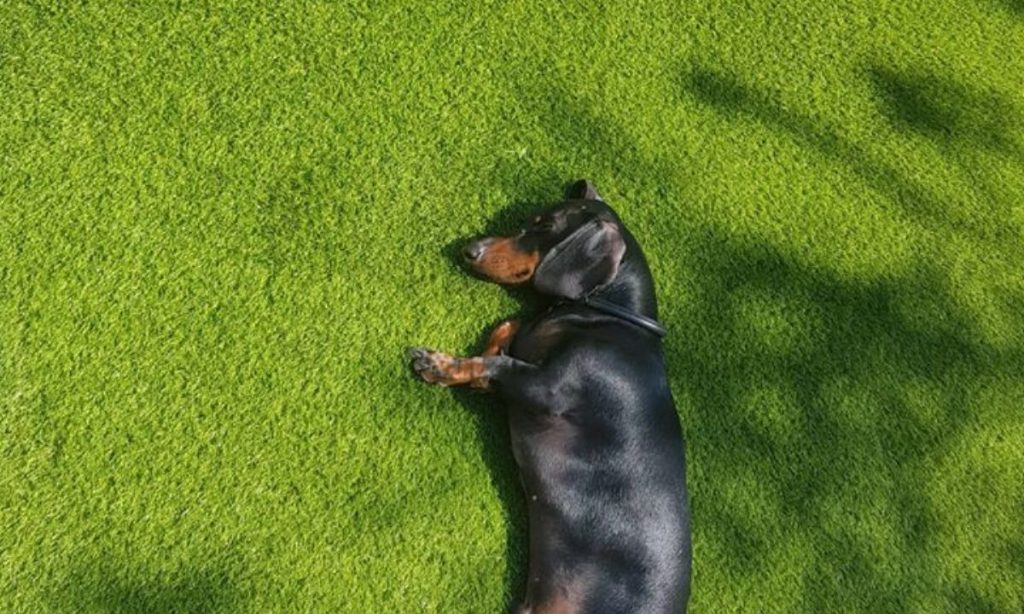
What is pile height and why does it matter?
Pile height refers to the length of a blade of artificial grass from its tip to the base where it meets the backing material. The pile height is measured in millimetres and you have three choices:
- Short – Low pile turf benefits include a reduced vulnerability to flattening, therefore requiring less brushing and maintenance. A short pile height will mimic a freshly cut lawn and is more suited to environments where resilience is the priority. We provide Holland Park 32mm grass for sports applications, and Easigrass Pet 35mm, which is specially designed artificial grass for pets.
- Medium – A medium pile height is the perfect compromise between the comfort of a luxurious long pile and the resilience of a short pile. This makes medium pile the ideal choice for busy family lawns with children and pets. All you need to do is brush it a couple of times a month and you’re good to go. Our range of medium pile includes the child and pet-friendly Chelsea 40mm and the luxurious Belgravia 40mm if you’re looking for that soft artificial grass.
- Long – If a luscious lawn and ultra-realistic appearance is your priority, a longer pile prioritises comfort and style. This makes longer pile heights most suited for decorative purposes or low-use gardens. They will require brushing a little more regularly compared to the other pile heights to avoid flattening. Our award-winning Mayfair 50mm grass is an outstanding choice for a long pile lawn.
Here at Easigrass Essex & Hertfordshire, we provide a range of artificial lawn thicknesses and pile heights to accommodate our full range of customers.
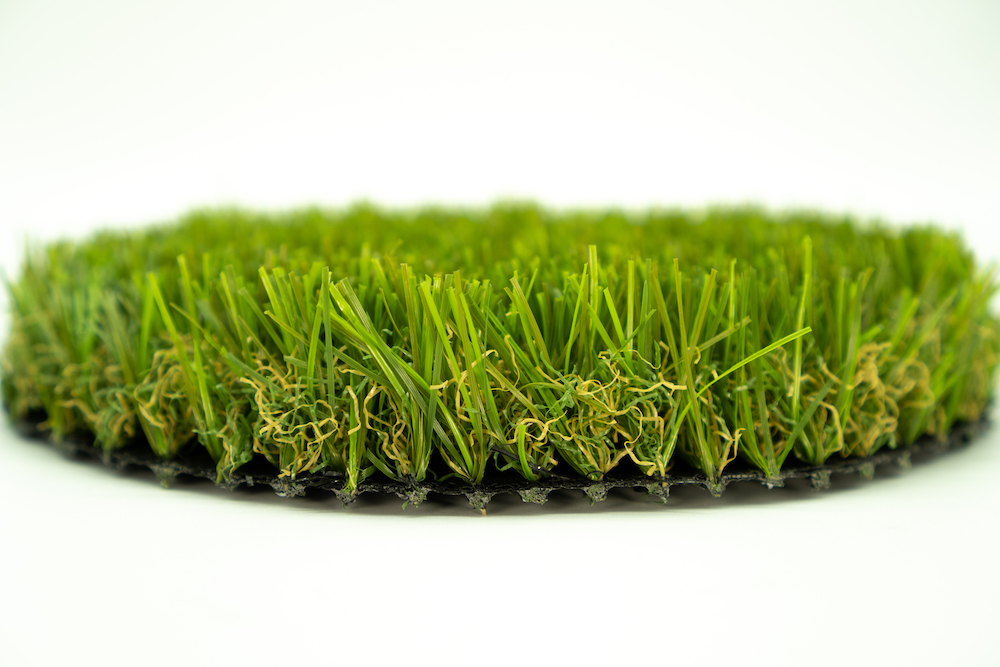
Why is density important for artificial grass?
Pile density refers to how many blades of artificial grass have been stitched into the backing across a certain area, usually measured per square metre or per linear metre. More dense piles mean that the blades have been more closely stitched together, and less dense piles mean that the blades have been stitched more widely apart.
A higher pile density generally means the grass will be more resilient and less vulnerable to flattening. That’s because the blades will be closer together and able to support each other, and therefore more able to recover from repeated footfall. This makes dense artificial turf ideal for commercial areas or home gardens with high usage.
Additionally, a higher density means a thicker and more luxurious-looking lawn, so you can benefit from both excellent resistance and an appearance of comfort and vitality.
Choosing the right pile height and density
Now you know all about pile height and artificial grass density and why it’s so important for your grass, it’s time to choose the right product for you.
To guide you through the full range of grass types available, simply browse our comparison page to discover the right product for your needs. We’re sure to have something for everyone, and if you need a little more help choosing, then just ask our friendly team.
Take your pick from our ultra-realistic range of artificial grass. Here at Easigrass Essex & Hertfordshire, we’re an award-winning supplier and installer of exceptional synthetic grass that looks and feels like the real thing. With a wide product range to choose from, feel free to order a sample today.




